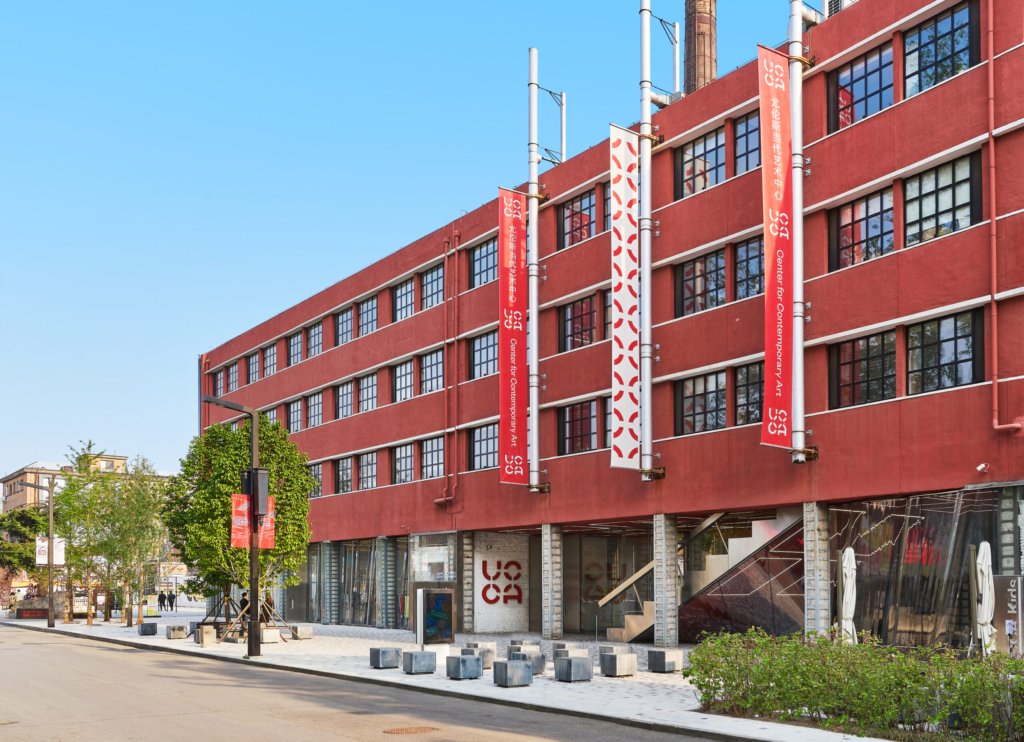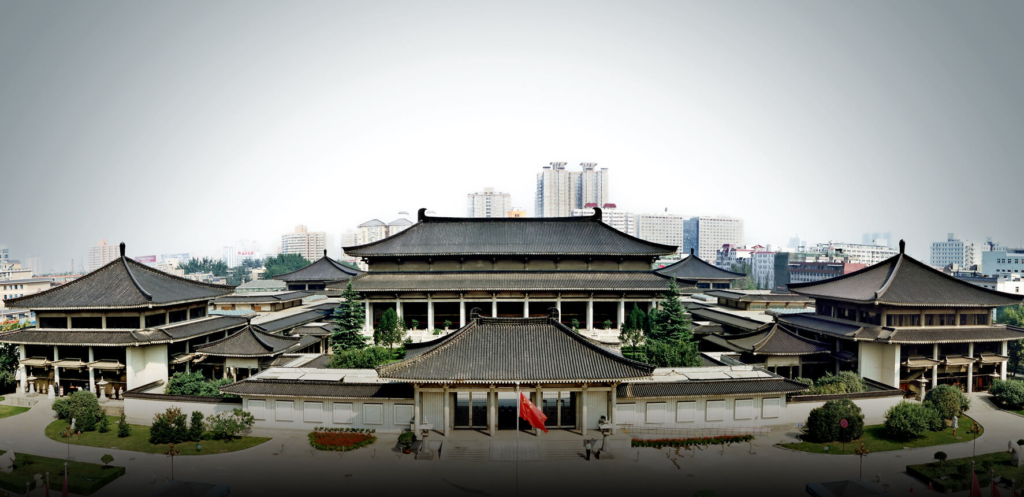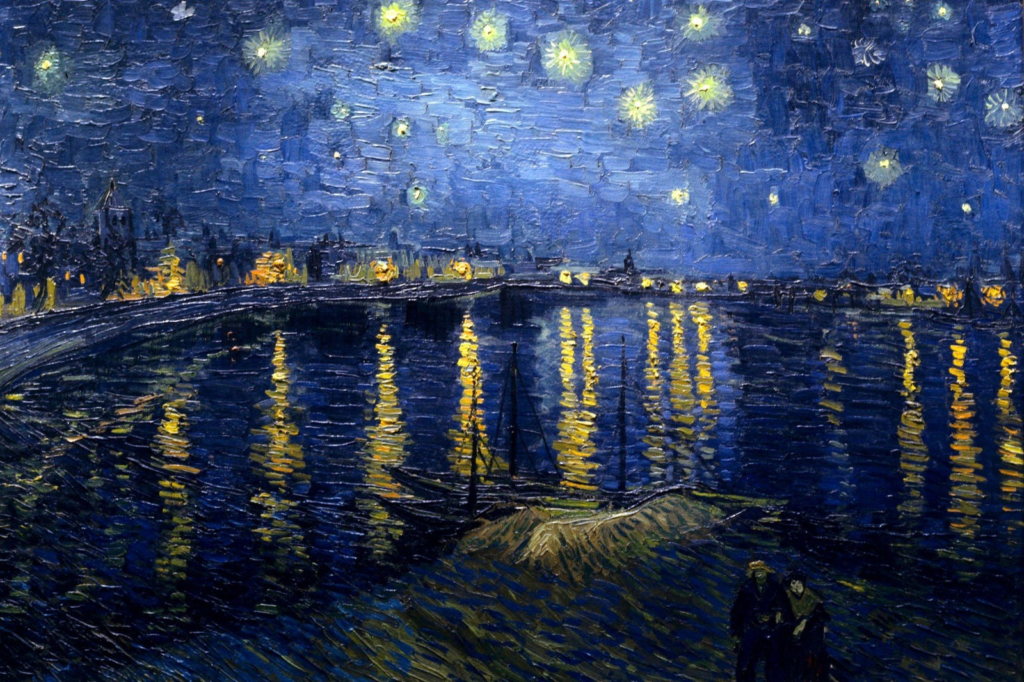China boasts a rich and diverse artistic heritage that spans millennia, reflecting its deep cultural roots and historical evolution. From ancient dynastic traditions to modern innovations, Chinese art encompasses a wide range of styles, mediums, and themes, each telling a unique story of the country’s cultural journey. The museums and galleries are essential cultural institutions in China, each contributing uniquely to the preservation and promotion of Chinese art on both national and international stages. Through their exhibitions, educational programs, and support for artists, they play a vital role in the global art community. To appreciate this vast artistic legacy, visiting some of the country’s most renowned museums is essential.
Brief History of Chinese Art
Chinese art can be traced back to prehistoric times, with early artifacts dating as far back as 10,000 years ago. The Neolithic period marked the beginning of pottery and jade carving, demonstrating early Chinese craftsmanship and artistic expression.
The Shang and Zhou dynasties (1600–256 BCE) witnessed the rise of bronze casting, seen in intricate ritual vessels and ceremonial objects that reflected societal beliefs and practices. This period laid the foundation for classical Chinese art, characterized by its symbolic motifs and spiritual significance.
The Han dynasty (206 BCE–220 CE) saw advancements in painting and calligraphy, emphasizing harmony with nature and the expression of personal emotions. These artistic forms continued to evolve through subsequent dynasties, including the Tang (618–907 CE) and Song (960–1279 CE), which are renowned for their contributions to ceramic arts, landscape painting, and poetry.
During the Ming (1368–1644 CE) and Qing (1644–1912 CE) dynasties, Chinese art experienced a period of renaissance, blending traditional aesthetics with global influences through trade and cultural exchange. Porcelain, silk textiles, and woodblock prints flourished, reflecting the era’s prosperity and artistic sophistication.
In the modern era, Chinese art underwent radical transformations under the influence of Western art movements and political upheavals, leading to the birth of contemporary Chinese art characterized by experimentation, social critique, and global recognition.
Importance of Museums and Galleries in China
Museums and galleries play a pivotal role in preserving, interpreting, and promoting Chinese art to a global audience. These institutions serve as custodians of cultural heritage, safeguarding priceless artifacts and artworks that embody China’s artistic legacy.
- Cultural Preservation: Museums such as the Palace Museum (Forbidden City) in Beijing and the Shanghai Museum house extensive collections that span thousands of years, offering insights into China’s dynastic history, artistic achievements, and cultural values. By starting exhibitions and conducting research, these institutions contribute to the preservation of cultural identity and historical continuity.
- Education and Public Engagement: Beyond preservation, museums and galleries serve as educational hubs, offering curated tours, workshops, and educational programs that engage visitors of all ages. These initiatives foster appreciation for Chinese art, allowing the public to explore diverse artistic traditions and understand their cultural significance.
- Promotion of Cultural Diplomacy: Chinese museums also play a crucial role in promoting cultural diplomacy on the global stage. Through traveling exhibitions, international collaborations, and cultural exchanges, these institutions enhance cross-cultural understanding and forge connections with audiences worldwide.
Origins of Museums and Galleries in China
The establishment of museums and galleries in China reflects a commitment to preserving cultural heritage, promoting education, and fostering cultural diplomacy on the global stage.
The concept of museums and galleries in China has evolved over centuries, with historical figures and movements contributing to their establishment. While pinpointing the exact first museum or gallery and its founder is challenging due to the organic growth of cultural institutions over time, several key developments are notable.
During the Qing dynasty (1644–1912), the imperial court established collections within the Forbidden City, which could be considered among the earliest forms of curated exhibitions in China. These collections, primarily of artworks and cultural artifacts, were intended to showcase the wealth and cultural sophistication of the dynasty.
In the late Qing and early Republican period (late 19th to early 20th centuries), as China underwent political and social changes, intellectuals and officials increasingly recognized the need to preserve and showcase China’s cultural heritage. One notable figure in this movement was Liang Qichao (1873–1929), a prominent scholar and reformer who advocated for the preservation of national treasures and the establishment of modern educational and cultural institutions.
The establishment of the National Museum of China (originally known as the Imperial Ancestral Temple Museum) in Beijing in 1912 marked a significant milestone. It was founded during the early Republic of China era and played a crucial role in centralizing and preserving China’s artistic and historical wealth. While not the first museum in China, it exemplifies the early efforts to institutionalize cultural preservation and education on a national scale.
Additionally, regional museums began to emerge across China during this period, often initiated by local governments, scholars, and philanthropists passionate about preserving regional history and cultural traditions.
While the exact individual credited with founding the very first museum in China remains unclear due to the decentralized nature of early collections and exhibitions, figures like Liang Qichao and institutions like the National Museum of China played pivotal roles in shaping the development and significance of museums in modern Chinese cultural discourse. These efforts continue to influence cultural preservation and education in China today.
Major Ten Museums of China: National and International Fame
China is home to numerous museums that preserve and showcase its rich cultural heritage and artistic achievements. Among these, ten museums stand out for their national and international renown: The Palace Museum (Forbidden City), Shanghai Museum, National Museum of China, Shaanxi History Museum, and Nanjing Museum. Each of these institutions offers unique insights into China’s historical and artistic legacy. Here, we highlight ten nationally and internationally famous museums that showcase the richness of Chinese art.
- The Palace Museum (Forbidden City): The Palace Museum, located in Beijing’s Forbidden City, is one of the most iconic and historically significant museums in China. Established in 1925, the museum was once the imperial palace of the Ming and Qing dynasties for nearly 500 years. The Forbidden City itself was built in the early 15th century by Emperor Yongle of the Ming dynasty. The museum’s historical significance lies in its vast collection of artifacts that span over 5,000 years of Chinese history.

The Palace Museum holds immense historical significance as the political and ceremonial centre of Chinese emperors from 1420 to 1912. The Forbidden City was designed according to traditional Chinese geomancy and architectural principles and is the largest palace complex in the world, covering approximately 180 acres with nearly 1,000 buildings. It was constructed under the reign of Emperor Yongle of the Ming dynasty and continued to be the imperial residence until the fall of the Qing dynasty. Its transition from an imperial palace to a public museum in 1925, initiated by the government of the Republic of China, marked a pivotal moment in preserving China’s cultural heritage.
The museum’s extensive collection includes ceramics, paintings, calligraphy, bronzes, jade, textiles, and imperial treasures. Notable are the Qing dynasty porcelain pieces, masterpieces of painting and calligraphy from renowned artists, ancient bronzes, and a remarkable jade collection. These artifacts reflect the artistic and historical achievements of one of the world’s oldest civilizations.
- Shanghai Museum: The Shanghai Museum, situated in the heart of Shanghai’s People’s Square, is a premier cultural institution known for its comprehensive collection of ancient Chinese art. It was established in 1952 by the Shanghai Municipal Government.

The museum’s collection features over 120,000 artifacts, including ancient bronzes, ceramics, calligraphy, paintings, jade, ivory, and Ming and Qing dynasty furniture. Highlights include intricate bronze artifacts from the Shang and Zhou dynasties, Ming dynasty blue-and-white porcelain, calligraphy and paintings from artists like Wang Xizhi and Zhao Mengfu, and detailed jade carvings. The Shanghai Museum plays a significant role in modern Chinese art through educational programs, workshops, and exhibitions that bridge ancient and contemporary art. Collaborations with modern artists and international exhibitions promote Chinese art globally, inspiring contemporary artists to explore and reinterpret classical styles.

- National Museum of China: Located on Beijing’s Tiananmen Square, the National Museum of China is one of the largest museums in the world, merging the Museum of Chinese History and the Museum of the Chinese Revolution. It was established in 2003 from the merger of these two institutions, which were originally founded in 1959. The museum’s vast collection spans from the prehistoric era to modern times, including artifacts from ancient dynasties, revolutionary relics, and contemporary art. Permanent exhibitions cover key aspects of Chinese history, such as the origins of Chinese civilization, the development of Chinese culture, and the country’s revolutionary history.
As a major educational institution, the National Museum of China offers extensive public programs, research opportunities, and international collaborations. Its exhibitions and events promote cultural exchange and enhance understanding of China’s history and cultural heritage.

- National Art Museum of China (NAMOC): The National Art Museum of China (NAMOC) in Beijing is one of the largest art museums in China. Established in 1962 under the Ministry of Culture, it was created to showcase the country’s modern and contemporary art. The museum’s extensive collection includes over 100,000 works of art, featuring traditional Chinese paintings, calligraphy, oil paintings, prints, sculptures, and folk art.
NAMOC serves as a vital platform for art exhibitions, academic research, and cultural exchange. Its collections and programs contribute to the preservation of cultural identity and historical continuity, engaging millions of visitors each year with the richness of Chinese art.

- Ullens Centre for Contemporary Art (UCCA): The Ullens Centre for Contemporary Art (UCCA) in Beijing’s 798 Art District is a leading contemporary art institution. Founded in 2007 by Belgian art collectors Guy and Myriam Ullens, UCCA has become a dynamic space for contemporary art, fostering creativity and dialogue between Chinese and international artists.
UCCA has hosted numerous innovative exhibitions and supported emerging artists, making it a pivotal venue for contemporary art in China. Its exhibitions often explore themes related to society, culture, and technology, contributing to the vibrant contemporary art scene in China.

- Shaanxi History Museum: Located in Xi’an, the Shaanxi History Museum is a treasure trove of artifacts from China’s ancient capital and the surrounding region, particularly from the Zhou, Qin, Han, and Tang dynasties. The museum was established in 1983 by the Shaanxi Provincial Government. The museum’s collection includes over 370,000 items, such as bronze ware, pottery, murals, coins, and religious artifacts. Notable exhibits include the Tang dynasty murals and the terracotta warriors from the Qin dynasty, reflecting the historical and cultural richness of the region.
The Shaanxi History Museum plays a critical role in archaeological research, housing many artifacts excavated from the ancient capital sites. Its exhibitions provide valuable insights into the history and culture of ancient China.

- Long Museum: The Long Museum, with locations in Shanghai and Chongqing, is one of China’s largest private museums. Founded in 2012 by Liu Yiqian and Wang Wei, prominent Chinese collectors, the museum boasts an extensive collection of traditional Chinese art, modern and contemporary Chinese art, and Western art.
The Long Museum provides a comprehensive view of Chinese art history while fostering an appreciation for global art. Its collections include rare antiques, revolutionary art, and contemporary masterpieces, making it a significant cultural institution in China.
- Today Art Museum: The Today Art Museum is a prominent private art museum in Beijing, dedicated to contemporary Chinese art. It aims to promote the development and appreciation of contemporary art in China.

The museum was established in 2002 by Zhang Baoquan, a Chinese entrepreneur and art collector. Zhang’s goal was to create a platform for contemporary artists to display their work and engage with the public. The Today Art Museum features a diverse collection of contemporary art, including paintings, installations, and multimedia works. It regularly hosts exhibitions, artist talks, and educational programs, contributing to the vibrant contemporary art scene in China.

- Nanjing Museum: The Nanjing Museum, one of China’s oldest and most comprehensive museums, is located in Nanjing, Jiangsu Province. It was established in 1933 by the Nationalist Government under the direction of Cai Yuanpei, a prominent educator and scholar.
The museum’s diverse collections include ancient ceramics, paintings, calligraphy, jade, and textiles, as well as historical artifacts from the Republic of China period. Highlights include Ming dynasty porcelain, Qing dynasty embroidery, and artifacts from the Six Dynasties period. The Nanjing Museum is a hub for cultural research and education, offering extensive public programs and scholarly activities. Its exhibitions and events promote the study and appreciation of Chinese cultural heritage, both domestically and internationally.
These museums are pillars of cultural preservation, education, and international cultural exchange, each contributing uniquely to the appreciation and understanding of China’s rich artistic and historical legacy.
- Red Brick Art Museum: The Red Brick Art Museum is a contemporary art museum located in Beijing, known for its distinctive red brick architecture and innovative exhibitions.

The museum was founded in 2014 by Yan Shijie, a Chinese entrepreneur and art collector. Yan’s vision was to create a unique space for contemporary art that integrates architecture and natural surroundings. The Red Brick Art Museum features a diverse range of contemporary art, including large-scale installations and multimedia works. Its exhibitions often explore themes related to society, culture, and technology, making it a leading venue for contemporary art in China.
These museums are essential cultural institutions in China, each contributing uniquely to the preservation and promotion of Chinese art on both national and international stages. Through their exhibitions, educational programs, and support for artists, they play a vital role in the global art community.
Digital Innovation in Museums
Virtual Tours and Digital Archives and Accessibility Benefits
- Remote Access: Virtual tours allow individuals to explore museums from anywhere in the world, breaking down geographical barriers.
- Inclusivity: Provides opportunities for people with physical disabilities or mobility issues to experience museum exhibits without leaving their homes.
- Cost-Effective: Eliminates travel costs, making cultural experiences more affordable and accessible to a broader audience.
- Educational Reach: Schools and educational institutions can incorporate virtual museum tours into their curricula, providing students with immersive learning experiences.
- Interactive Features: Enhanced with multimedia elements such as audio guides, video clips, and interactive maps, enriching the visitor experience.
- Language Options: Many virtual tours offer multilingual support, catering to international audiences and promoting cultural exchange.
Challenges and Future Directions
Financial Investment
- High Costs: Developing and maintaining virtual tours and digital archives requires significant financial resources, which can be a burden for smaller museums.
- Funding Sources: Museums often need to seek grants, sponsorships, or partnerships to fund these initiatives.
Technical Expertise
- Specialized Skills: Creating high-quality digital content requires expertise in areas such as digitization, software development, and multimedia production.
- Training: Museums need to invest in training staff or hiring skilled professionals to manage and update digital platforms.
Digital Divide
- Access Inequality: Not all potential visitors have access to high-speed internet or the necessary devices to fully experience virtual tours.
- Inclusivity Efforts: Museums must find ways to address this divide, possibly through community programs or partnerships with local organizations.
Quality Assurance
- Accuracy: Ensuring that digital representations of physical artifacts are accurate and high-quality is crucial for maintaining credibility and educational value.
- Preservation: Digital content must be preserved and regularly updated to prevent data loss or uselessness.
Evolving Technologies
- Rapid Advancement: Technology evolves quickly, and museums must keep up with the latest developments in virtual and augmented reality to remain relevant.
- Continuous Improvement: Regular updates and improvements are necessary to enhance user experience and incorporate new features.
AI Integration
- Enhanced Experiences: Artificial intelligence can be used for personalized visitor experiences, data analysis, and efficient cataloguing of digital archives.
- Implementation Challenges: Integrating AI requires careful planning and substantial investment in both technology and training.
Collaboration
- Partnerships: Collaborating with tech companies, educational institutions, and cultural organizations can help museums leverage resources and expertise.
- Shared Knowledge: Joint projects and knowledge-sharing initiatives can drive innovation and improve digital offerings.
User Engagement
- Interactivity: Creating engaging and interactive content is essential for maintaining visitor interest in digital platforms.
- Feedback Mechanisms: Museums should implement systems to gather and analyze visitor feedback to continually refine and improve digital experiences.
Legal and Ethical Considerations
- Copyright Issues: Digitizing and sharing artworks involve navigating complex copyright laws and ensuring proper attribution.
- Privacy Concerns: Protecting user data and privacy is critical, especially when incorporating personalized or interactive features.
Influence on Tourism and Economy
Tourist Attractions and Revenue Generation
- Drawing Tourists: Museums and galleries are significant tourist attractions that draw millions of visitors annually. Iconic institutions such as the Palace Museum in Beijing and the Shanghai Museum are major destinations for both domestic and international tourists.
- Economic Impact: The influx of tourists to these cultural sites generates substantial revenue through ticket sales, guided tours, and special exhibitions. For instance, the Palace Museum, also known as the Forbidden City, attracts over 17 million visitors per year, contributing significantly to the local economy. Major museums and galleries in China, such as the Palace Museum, generate significant revenue from tourism. For instance, the Palace Museum alone earns approximately 1 billion yuan (around $150 million USD) annually from ticket sales and related activities, contributing substantially to the local economy and supporting the tourism industry.
- Local Businesses: The presence of popular museums and galleries boosts surrounding businesses, including hotels, restaurants, and souvenir shops, creating a thriving local economy. This ripple effect supports jobs and stimulates economic activity in the community.
- Cultural Events: Museums often host cultural events, festivals, and temporary exhibitions, attracting even more visitors and encouraging repeat visits. These events can significantly increase local tourism during off-peak seasons.
- Government Support: Recognizing the economic benefits, governments often invest in the development and maintenance of museums and galleries. This investment helps to enhance the cultural infrastructure and promotes sustainable tourism.
Promoting Cultural Diplomacy
- International Collaborations: Museums and galleries frequently collaborate with international institutions, organizing traveling exhibitions and joint research projects. These collaborations promote cultural exchange and strengthen diplomatic ties between countries.
- Soft Power: By showcasing their rich cultural heritage, countries can project a positive image globally, enhancing their soft power. Museums serve as cultural ambassadors, fostering mutual understanding and respect between different cultures.
- Cultural Exchange Programs: Many museums participate in cultural exchange programs that involve sending their collections abroad and hosting foreign exhibitions. These programs facilitate global cultural dialogue and create opportunities for learning and collaboration.
- Educational Outreach: Through educational programs and public engagement initiatives, museums contribute to cultural diplomacy by educating both local and international audiences about diverse cultural traditions and histories.
- Promoting National Identity: Museums help to promote a sense of national pride and identity by preserving and showcasing national treasures. They play a crucial role in telling the country’s story to the world, reinforcing cultural values and heritage.
- Tourism Campaigns: National tourism boards often highlight museums and galleries in their promotional campaigns, using these cultural institutions as key selling points to attract international visitors. This strategy not only boosts tourism but also enhances the country’s cultural reputation.
By influencing tourism and promoting cultural diplomacy, museums and galleries play a pivotal role in both the economic development and international standing of their respective countries.
Institutions like the Palace Museum and the Shanghai Museum not only preserve invaluable artifacts but also educate the public and promote cultural exchange. They significantly impact the economy through tourism, drawing millions of visitors and generating substantial revenue. Additionally, these institutions enhance cultural diplomacy by fostering international collaborations and cultural understanding. Through continuous innovation and outreach, Chinese museums ensure that their rich heritage remains accessible and relevant, contributing to both cultural preservation and economic prosperity.




